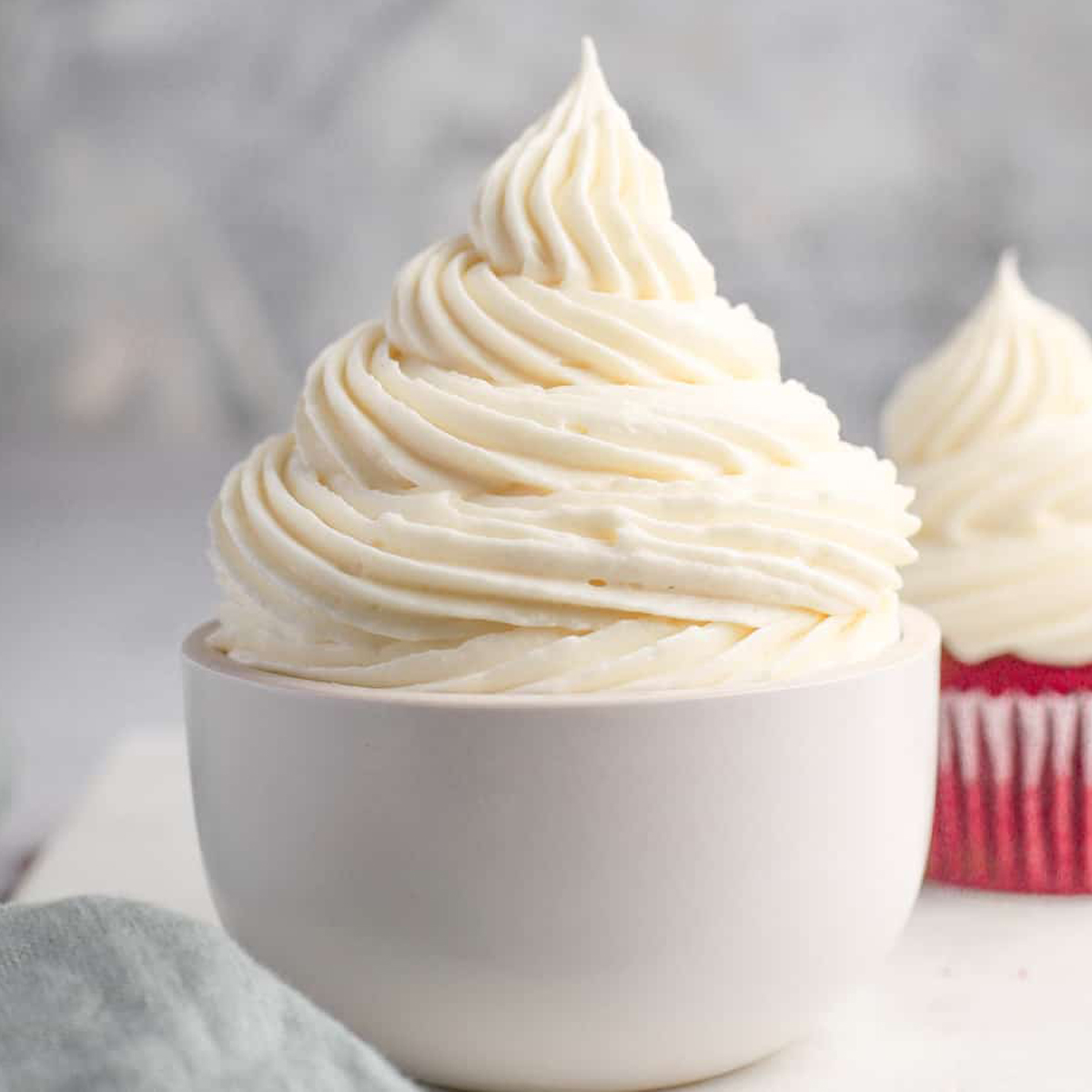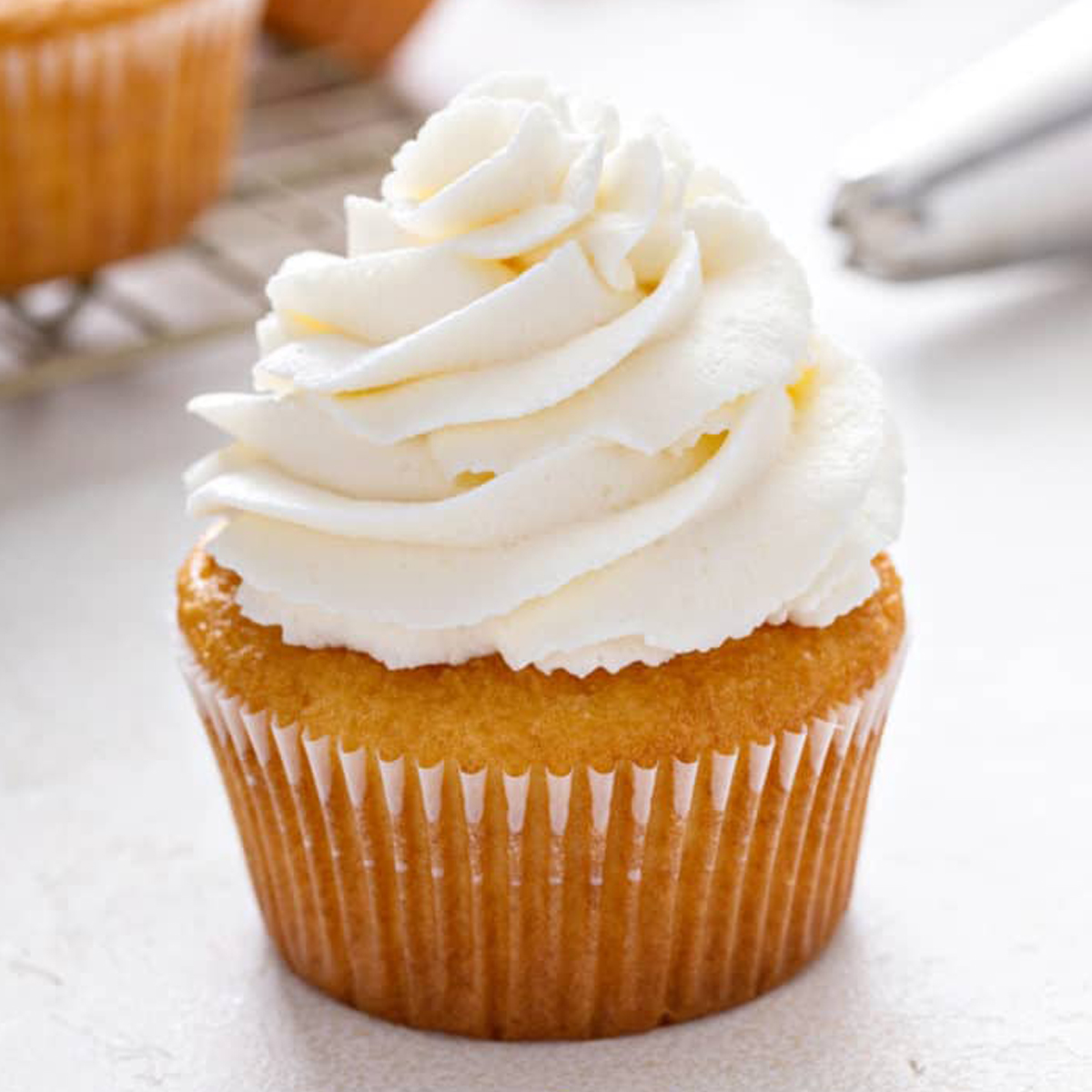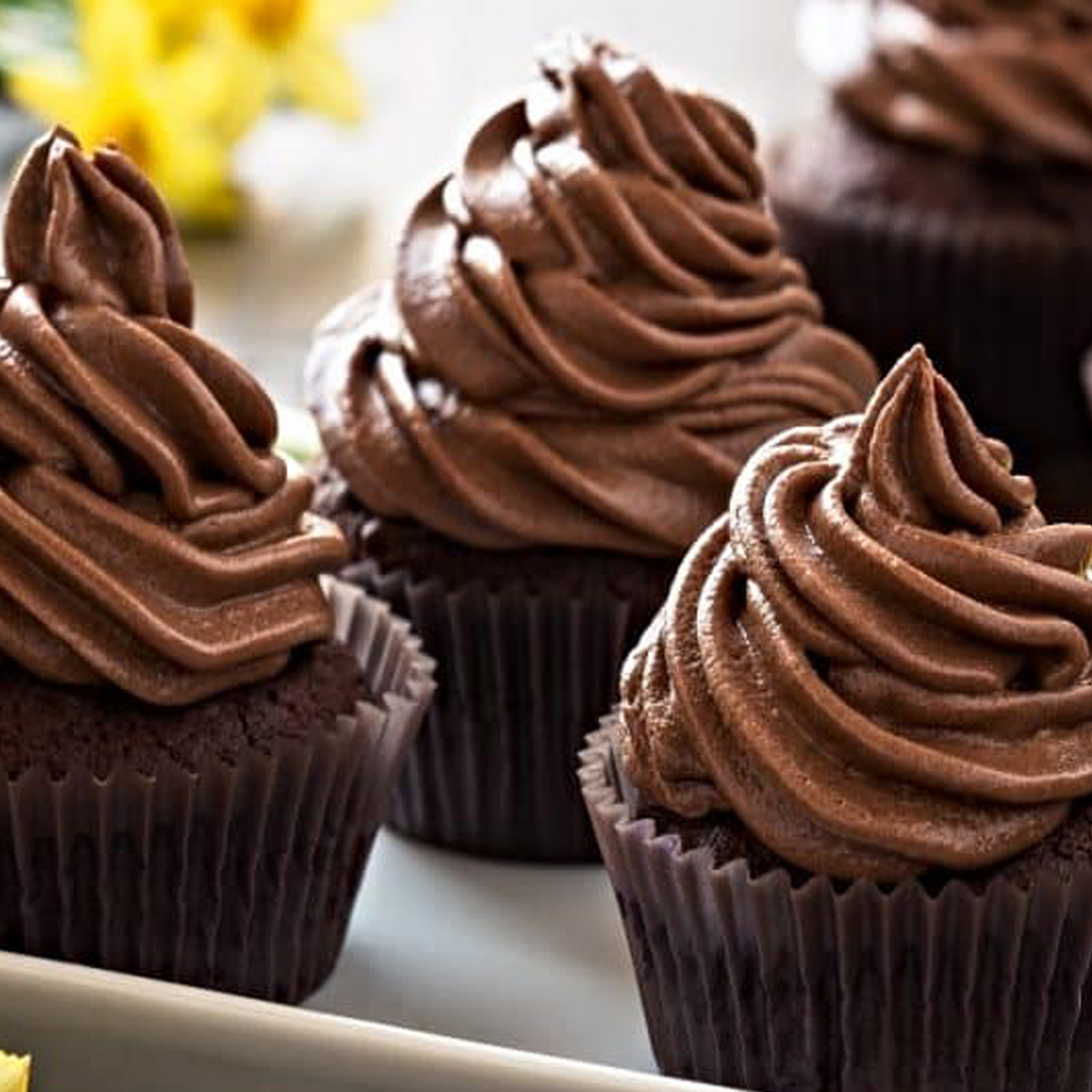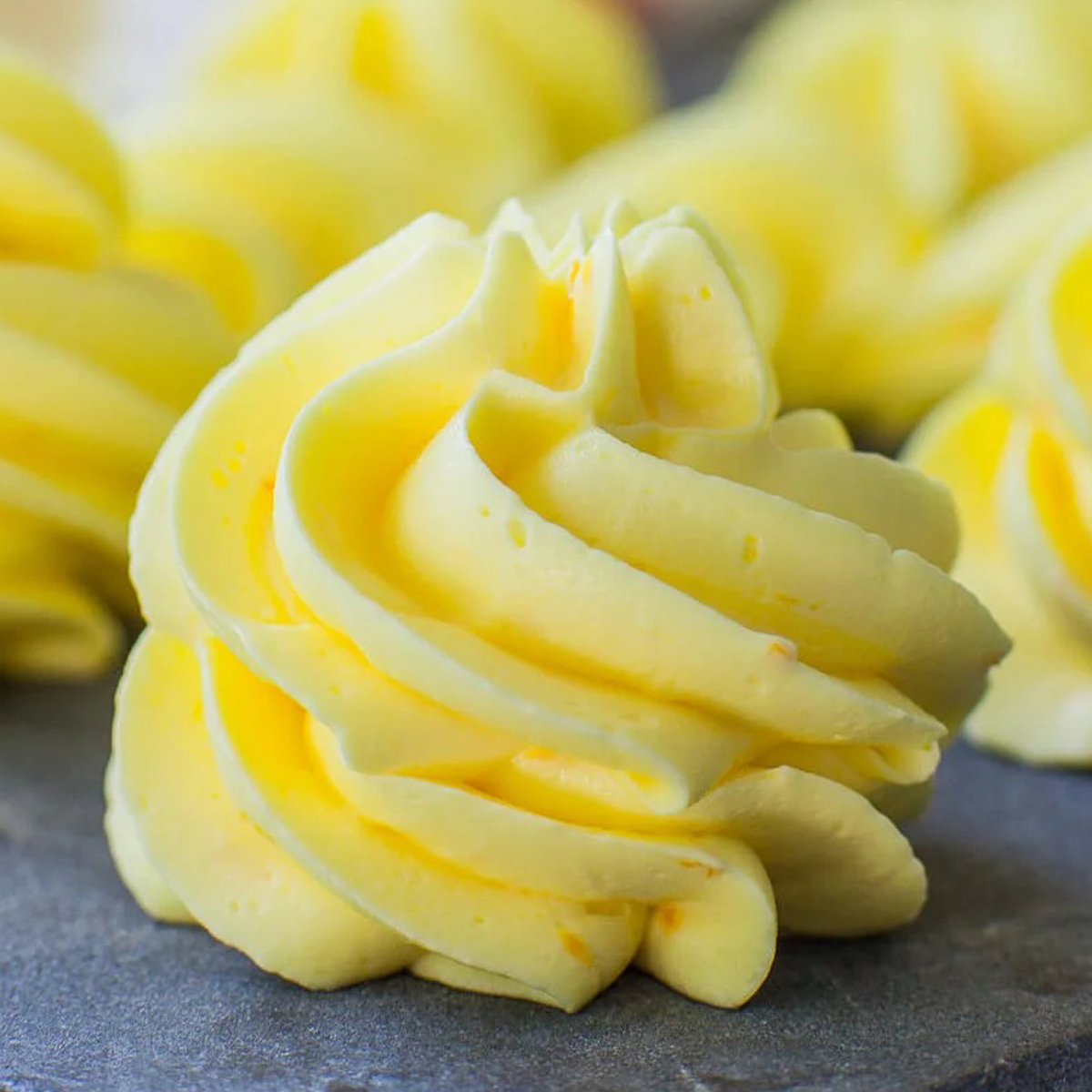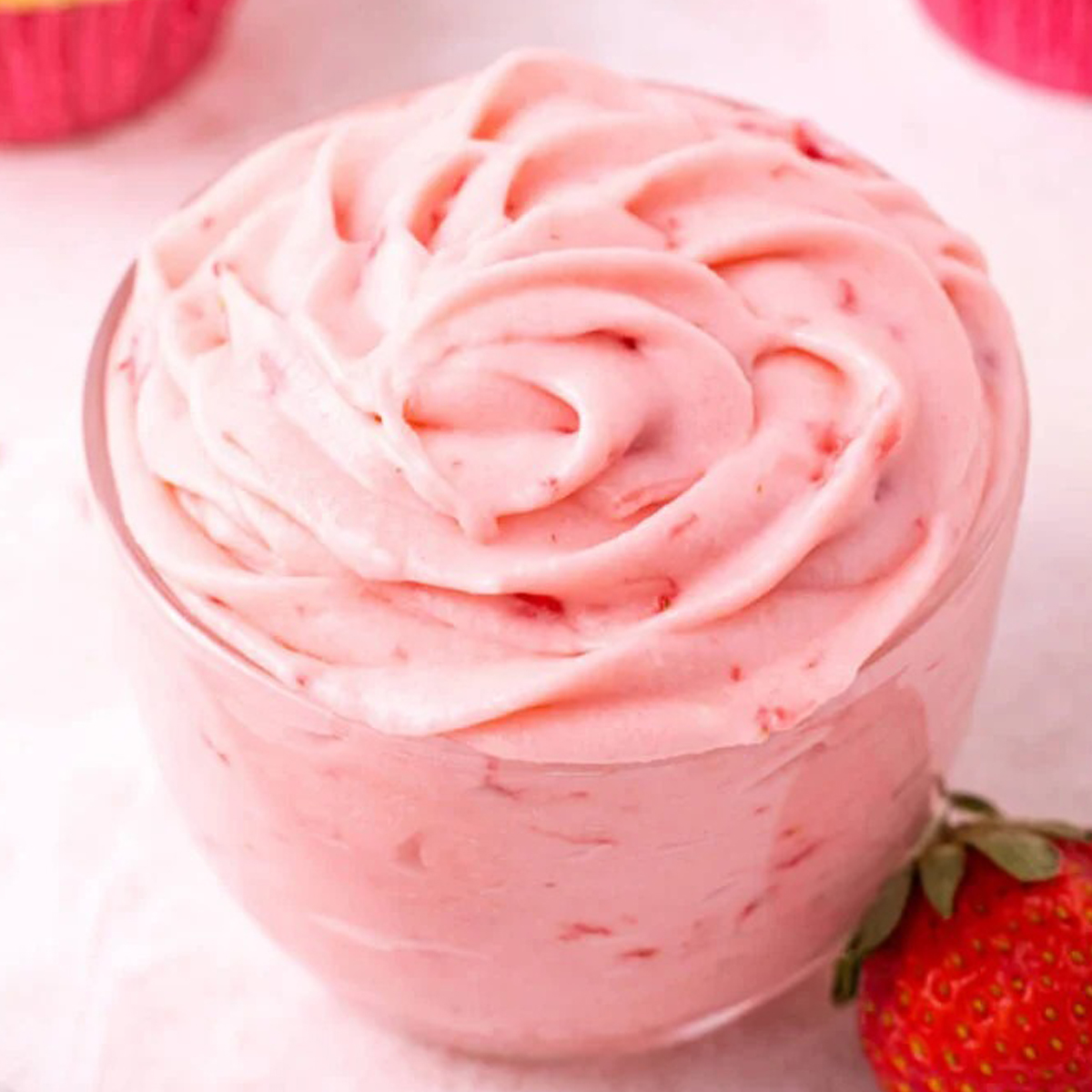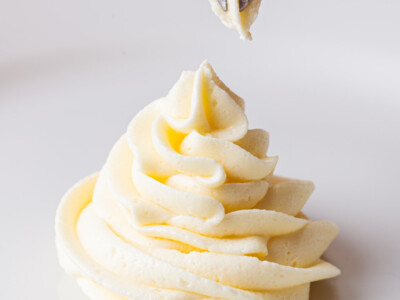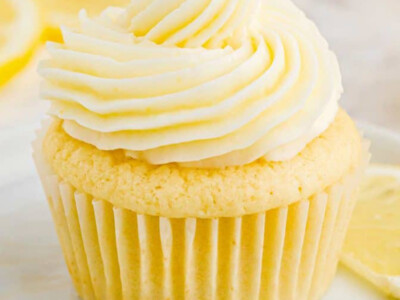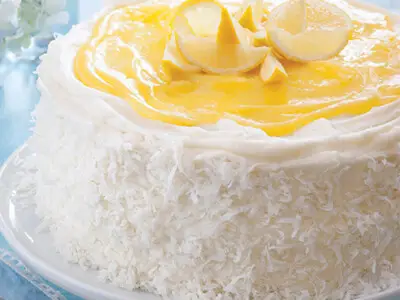The Best Fluffy Pancakes recipe you will fall in love with. Full of tips and tricks to help you make the best pancakes.
The Art Of Marshmallow Frosting
Marshmallow frosting, a delightful confection that adds a cloud-like touch to desserts, is a sweet and velvety topping known for its light texture and subtle sweetness. Reminiscent of the classic marshmallow candy, this frosting is crafted by blending or whipping together ingredients like sugar, egg whites, and sometimes corn syrup, resulting in a glossy and fluffy creation. With its airy consistency and charmingly soft appearance, marshmallow frosting serves as a delectable enhancement for cakes, cupcakes, and other treats, offering both a visual and gustatory sensation that elevates the overall dessert experience. Whether spread atop a rich chocolate cake or delicately piped onto pastel-hued cupcakes, marshmallow frosting is a timeless choice that adds a touch of whimsy to any culinary creation.

What is Marshmallow Frosting?
Marshmallow frosting, also known as marshmallow fluff or marshmallow creme frosting, is a sweet and light topping used to adorn various desserts. It’s made by whipping together sugar, egg whites, and sometimes corn syrup to create a fluffy, airy, and glossy texture that resembles traditional marshmallows. This type of frosting has a distinct softness and a mild sweetness, adding both flavor and visual appeal to cakes, cupcakes, cookies, and other treats.
The frosting’s consistency is similar to that of a marshmallow candy but in spreadable or pipeable form. It’s often used to create a whimsical and playful element in desserts, as well as to provide a contrasting texture to denser baked goods. The glossy finish of marshmallow frosting can be enhanced with additional flavorings like vanilla extract or even tinted with food coloring to match the theme of the dessert.
Marshmallow frosting is versatile and can be used for a variety of purposes. It can be spread over the top and sides of a cake, used as a filling for whoopie pies, spread onto cupcakes, or even used as a dip for fruits and cookies. Its light and airy nature makes it a delightful addition to many different types of desserts, offering a pleasing contrast to richer flavors and textures.

Why you will love Marshmallow Frosting?
- Sweet and Fluffy Texture: Marshmallow frosting is known for its light and airy texture, making it a delightful addition to cakes, cupcakes, and other desserts. Its smooth consistency creates a pleasing contrast to the denser baked goods.
- Mild Flavor: The flavor of marshmallow frosting is relatively mild, with hints of vanilla or other flavorings used in the recipe. This makes it versatile and complementary to a wide range of dessert flavors without overpowering them.
- Piping and Decorating: Marshmallow frosting is excellent for piping and decorating due to its consistency. It can hold intricate shapes and designs, making it a popular choice for creating visually appealing desserts.
- Toasting Potential: One unique aspect of marshmallow frosting is that it can be toasted, similar to marshmallows over a campfire. Using a kitchen torch, you can create a caramelized and slightly crispy exterior while maintaining the soft interior.
- Nostalgia: For many people, marshmallows are associated with feelings of nostalgia, often linked to childhood memories of roasting marshmallows over a fire. Marshmallow frosting can evoke these nostalgic feelings and bring a sense of comfort.
- Versatility: Marshmallow frosting can be customized by adding food coloring for different hues or incorporating other flavor extracts to create variations like chocolate marshmallow frosting or fruit-flavored variations.
- Ease of Making: Making marshmallow frosting is relatively straightforward compared to more complex buttercream or ganache frostings. It typically involves whipping together egg whites, sugar, and flavorings until stiff peaks form.
- Less Sweet Than Buttercream: Some people prefer marshmallow frosting over traditional buttercream because it tends to be less sweet. The sweetness is balanced by the airy texture and mild flavor.
- Novelty: Marshmallow frosting can add a unique twist to classic desserts, giving them an unexpected and interesting element that sets them apart.
Ultimately, the enjoyment of marshmallow frosting comes down to personal preference. Some people appreciate its lightness, while others enjoy the contrast of textures and the ability to create visually stunning desserts. If you have a fondness for marshmallow flavor and a preference for fluffy frostings, marshmallow frosting could be a delightful choice for your desserts.

Marshmallow Frosting Recipe
Ingredients
- 3 large egg whites
- 1 cup granulated sugar
- 1/4 teaspoon cream of tartar
- 1 teaspoon vanilla extract
Instructions
- Prepare Equipment:
- Make sure your mixing bowl and beaters are clean and free from any grease, as this can affect the egg whites’ ability to whip properly.
- Create a Double Boiler:
- Fill a medium-sized saucepan with a few inches of water and bring it to a simmer over low heat. Place a heatproof bowl on top of the saucepan, making sure it doesn’t touch the water. This will be your makeshift double boiler.
- Whisk Egg Whites and Sugar:
- In the heatproof bowl, whisk together the egg whites, granulated sugar, and cream of tartar. This mixture will be gently heated to dissolve the sugar and pasteurize the egg whites.
- Heat and Whisk:
- Place the bowl over the simmering water and whisk the egg white mixture constantly but gently. You want to heat the mixture until the sugar is completely dissolved, and the mixture feels warm to the touch, about 3-4 minutes.
- Whip the Mixture:
- Once the sugar is dissolved and the mixture is warm, remove the bowl from the double boiler. Use a hand mixer or a stand mixer to whip the mixture on medium-high speed until stiff, glossy peaks form. This usually takes about 5-7 minutes.
- Add Vanilla Extract:
- Once the egg white mixture has reached stiff peaks, add the vanilla extract and continue whipping for another 1-2 minutes to incorporate the flavor.
- Frost Your Dessert:
- The marshmallow frosting is now ready to use. Transfer it to a piping bag fitted with your desired tip and pipe it onto cupcakes, cakes, or other desserts. You can also spread it with an offset spatula.
- Optional Toasting:
- If desired, you can use a kitchen torch to lightly toast the marshmallow frosting, giving it a caramelized and slightly crispy exterior. This step is reminiscent of toasted marshmallows.
- Serve and Enjoy:
- Once your dessert is frosted, it’s ready to be enjoyed. The marshmallow frosting will provide a sweet, fluffy, and visually appealing topping.
Note: This recipe makes enough marshmallow frosting to generously frost about 12 cupcakes or a single-layer cake. If you’re working with a larger cake or more cupcakes, you might want to double the recipe.
Remember, working with egg whites and sugar requires attention and care. Make sure to follow food safety guidelines and handle raw egg whites properly.

How to serve
Marshmallow frosting can be served in various ways, depending on the type of dessert you’re using it for. Here are some common serving suggestions:
- Cupcakes:
- Pipe the marshmallow frosting onto cooled cupcakes using a piping bag and your desired tip. You can create swirls, rosettes, or other decorative patterns. If desired, lightly toast the frosting with a kitchen torch for a toasted marshmallow effect.
- Cakes:
- Spread the marshmallow frosting evenly over the top and sides of your cake using an offset spatula. You can keep it smooth or create decorative peaks and swirls. You can also add additional decorations like sprinkles, chocolate shavings, or edible flowers.
- Cookies:
- Spread or pipe marshmallow frosting onto cooled cookies. Sandwich two cookies together with the frosting in the middle to create a cookie sandwich.
- Dessert Bars:
- Frost dessert bars or brownies with marshmallow frosting for an extra layer of sweetness. You can spread the frosting evenly over the top or create decorative patterns.
- Toasted Treats:
- For a fun and nostalgic twist, toast the marshmallow frosting using a kitchen torch before serving. This will create a caramelized outer layer, similar to a toasted marshmallow.
- Hot Beverages:
- You can also use marshmallow frosting to top hot beverages like hot chocolate or coffee. Place a dollop of frosting on top of the beverage, and it will melt slightly, adding a sweet and creamy element.
- Parfaits:
- Layer the marshmallow frosting with other dessert components, like cake cubes, fruit, and whipped cream, to create a delicious parfait.
- Ice Cream Sundaes:
- Dollop marshmallow frosting onto ice cream sundaes for a sweet and fluffy topping. You can also lightly toast the frosting before adding it to the sundae.
- S’mores:
- Incorporate marshmallow frosting into s’mores by spreading it onto graham crackers and adding pieces of chocolate. Toast the frosting slightly for an indoor twist on the classic campfire treat.
Remember that marshmallow frosting is quite soft and fluffy, so it’s best to serve it on desserts that are relatively stable or cool. If you’re serving it on warm or hot items, like hot beverages, the frosting may melt or lose its structure more quickly.
When serving marshmallow frosting, consider the flavors and textures of the desserts you’re pairing it with to create a harmonious and enjoyable eating experience.

How to store
Storing marshmallow frosting properly will help maintain its texture and flavor. Here’s how to store it:
- Short-Term Storage:
- If you plan to use the marshmallow frosting within a few hours, you can leave it at room temperature. Keep it covered with plastic wrap or airtight lid to prevent it from drying out or forming a crust.
- Refrigeration:
- If you have leftover marshmallow frosting that you want to store for a day or two, place it in an airtight container and store it in the refrigerator. Before using it again, allow the frosting to come to room temperature and give it a gentle stir to restore its fluffiness.
- Longer Storage:
- For longer storage, you can freeze marshmallow frosting. Place the frosting in an airtight container, leaving some space at the top to account for expansion. It’s a good idea to separate the frosting into smaller portions if you might not use all of it at once. Frozen marshmallow frosting can last for several weeks.
- Thawing Frozen Frosting:
- When you’re ready to use frozen marshmallow frosting, transfer it from the freezer to the refrigerator and let it thaw slowly. Once it’s completely thawed, let it come to room temperature and give it a gentle stir to restore its texture. If the frosting appears a bit deflated, you can re-whip it with a hand mixer to fluff it up.
- Avoid Over-Whipping:
- When re-stirring or re-whipping marshmallow frosting that has been stored, be careful not to over-whip it. Overmixing can lead to a grainy texture, so stop whipping as soon as the frosting is smooth and fluffy again.
- Avoid Excessive Moisture:
- Moisture can affect the texture of marshmallow frosting, so ensure that the container you’re using for storage is completely dry before placing the frosting inside. Moisture can cause the frosting to become sticky or lose its fluffiness.
Remember that marshmallow frosting contains egg whites, which can be perishable. Use your best judgment when deciding how long to store it. If you notice any changes in smell, texture, or appearance, it’s best to discard the frosting to ensure food safety.
You Might Also Like These Recipes
- Cream Cheese Frosting Elegance
- Dreamy Lemon Cream Frosting
- Enchanting Raspberry Cream Frosting
- Captivating Tastes Of Strawberry Cream Frosting
- Unveiling The Artistry Of Chocolate Cream Frosting
- The Art Of Whipped Cream Frosting
Tips to make perfect Marshmallow Frosting
Making perfect marshmallow frosting requires attention to detail and a few key techniques. Here are some tips to help you achieve the best results:
- Clean and Dry Equipment: Ensure that your mixing bowl and beaters are clean, dry, and free from any grease or residue. Even a small amount of grease can prevent egg whites from whipping properly.
- Egg Whites at Room Temperature: Start with egg whites at room temperature. Room temperature egg whites whip up better and faster than cold ones. Separate the eggs while they’re cold and let the whites come to room temperature before using.
- Stiff Peaks: Whip the egg whites until they form stiff, glossy peaks. This means the peaks should stand up straight without drooping. Over-whipped egg whites can become dry and grainy.
- Sugar Dissolution: When heating the egg white and sugar mixture, ensure that the sugar is completely dissolved. Rub a small amount between your fingers; if it feels gritty, continue to whisk over the double boiler until smooth.
- Slow and Steady Heating: Heat the egg white and sugar mixture gently over the double boiler. Avoid high heat to prevent curdling or cooking the egg whites unevenly.
- Avoid Moisture: Moisture can ruin the texture of marshmallow frosting. Ensure that there’s no water or steam coming into contact with the egg whites, as this can prevent proper whipping.
- Cool Down: Let the egg white and sugar mixture cool slightly before whipping. This prevents the heat from destabilizing the foam as you whip.
- Flavor and Stability: Add vanilla extract or other flavorings after reaching stiff peaks to maintain stability in the frosting. Adding flavorings earlier can sometimes interfere with the whipping process.
- Storage: If you’re not using the frosting immediately, cover it with plastic wrap directly touching the surface to prevent a skin from forming. If the frosting deflates a bit, gently re-whip it to restore its fluffiness before using.
- Texture Check: The frosting should be smooth, glossy, and spreadable. If it’s grainy or curdled, it might have been over-whipped or overheated. You can try gently warming the mixture and re-whipping it to correct this.
- Toasting: If you’re planning to toast the frosting, use a kitchen torch and do it gently. Move the torch in a circular motion to evenly brown the surface without scorching it.
- Experiment: Don’t be afraid to experiment with different flavors, colors, and textures. You can incorporate melted chocolate, fruit purees, or other extracts to create unique variations.
- Patience: Marshmallow frosting can be a bit finicky, but practice makes perfect. Don’t get discouraged if your first attempt isn’t perfect; learning the nuances of this frosting takes time.
Remember, practice and patience go a long way in perfecting any recipe. With these tips in mind, you’ll be on your way to creating beautiful and delicious marshmallow frosting for your favorite desserts.

FAQ’s
1. Why is my marshmallow frosting too runny or not holding its shape?
- This could be due to underwhipping the egg whites or adding the flavorings too early in the whipping process. Make sure to whip the egg whites until stiff, glossy peaks form before adding flavorings.
2. My marshmallow frosting turned grainy. What went wrong?
- Grainy frosting can result from overwhipping the egg whites or not fully dissolving the sugar. Start with fresh egg whites, ensure the sugar is fully dissolved during the double boiler step, and avoid overwhipping.
3. Can I make marshmallow frosting without a double boiler?
- While a double boiler helps prevent overheating, you can use a heatproof bowl over a pot of simmering water. Just ensure the bowl doesn’t touch the water and monitor the temperature closely.
4. How can I fix deflated marshmallow frosting?
- If your marshmallow frosting deflates, you can try gently re-whipping it with a mixer. Start on low speed and gradually increase to medium-high until it regains its fluffiness.
5. Can I color marshmallow frosting?
- Yes, you can add food coloring or gel color to marshmallow frosting. Add a small amount at a time until you achieve the desired color. Gel colors are preferable as they won’t add excess moisture.
6. Why did my marshmallow frosting weep or separate?
- Weeping or separation can occur if the frosting is exposed to temperature changes or if it’s stored improperly. Make sure to bring the frosting to room temperature before using it and store it in an airtight container.
7. Can I use marshmallow frosting for intricate cake decorations?
- While marshmallow frosting is great for piping and simple decorations, it might not hold intricate designs as well as firmer buttercream. Use a stiffer frosting for detailed decorations.
8. Can I make marshmallow frosting ahead of time?
- Yes, you can make marshmallow frosting ahead of time and store it in the refrigerator. Just be sure to bring it to room temperature and re-whip it gently before using it to restore its texture.
9. My marshmallow frosting smells eggy. Is it safe to eat?
- A slight eggy smell is common due to the nature of using egg whites. As long as the eggs were fresh and properly handled, the frosting should be safe to eat. The smell should dissipate as the frosting is whipped.
10. Can I use marshmallow frosting to cover an entire cake for a smooth finish?
- Marshmallow frosting is quite soft and may not hold up well for a perfectly smooth cake covering. It’s better suited for rustic or textured finishes.
11. How long can I keep marshmallow frosting at room temperature?
- Marshmallow frosting can be left at room temperature for a few hours. However, if it’s particularly warm or humid, it’s best to keep it in a cool place or refrigerate it to prevent melting or deflation.
Remember that practice makes perfect, and don’t be discouraged if you encounter issues along the way. Troubleshooting and adjusting your technique will help you achieve the desired results over time.
Nutrition information
The nutritional content of marshmallow frosting can vary based on factors such as portion size and specific ingredients used. However, I can provide you with a general estimate of the nutritional information for a typical serving of marshmallow frosting made with the ingredients mentioned earlier (3 egg whites, 1 cup granulated sugar, 1/4 teaspoon cream of tartar, and 1 teaspoon vanilla extract).
Please note that these values are approximate and can vary based on the brand of ingredients and any modifications you make to the recipe:
Nutritional Information for Marshmallow Frosting (per serving, about 2 tablespoons):
- Calories: ~70-90 kcal
- Carbohydrates: ~17-22 g
- Sugars: ~17-22 g
- Protein: ~1 g
- Fat: ~0 g
- Fiber: 0 g
- Sodium: ~10 mg
Keep in mind that marshmallow frosting is primarily composed of sugar and egg whites, so it’s a high-sugar and low-protein mixture. The nutritional values provided are rough estimates and should not be considered exact. If you’re concerned about the nutritional content of your dessert, consider using alternative sweeteners or modifications to reduce the sugar content.

